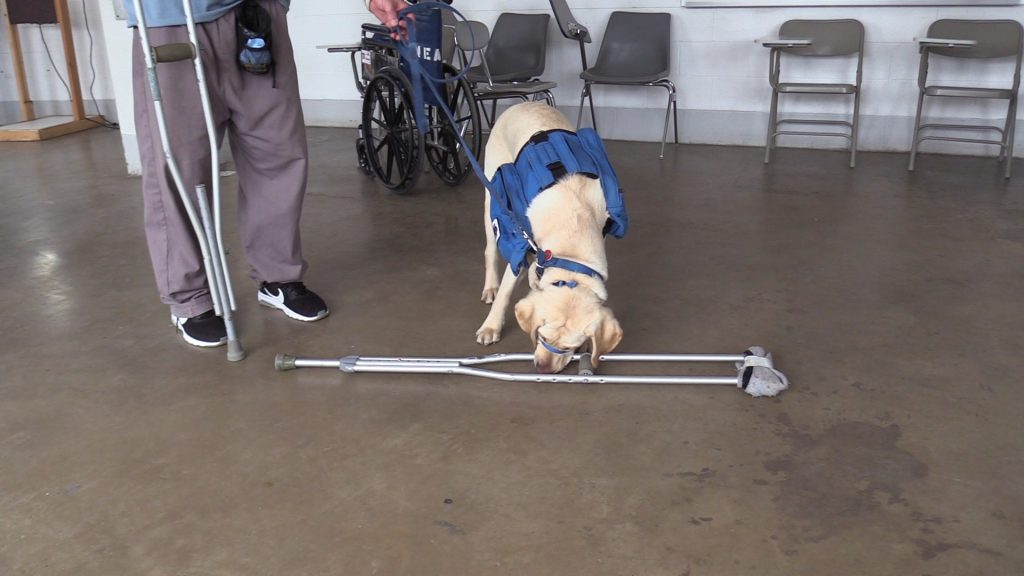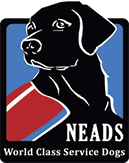Year of the NEADS Dog Month 12 – Specialized Training
January 17, 2019
Welcome to month 12 of our Year of the NEADS Dog series, in which we highlight the transition our Service Dogs in Training make during their first year with us. This month, we take a look at one of the final steps in a dog’s training – specialized training for a specific “career”.
As we saw earlier in this series (Month 4, Month 6, and Month 7), NEADS trainers, inmate handlers, and Weekend Puppy Raisers work on teaching the dogs a common set of tasks as well as obedience training. When the dogs return to campus for their One Year Evaluation, the NEADS trainer identifies what they believe is the career each dog is best suited for. They may identify several careers for some dogs, as the characteristics can be interchangeable and may depend on the clients we have waiting to be matched. With this decision made, the NEADS trainer now works with the inmate handler on specialized training.
Many of the specialized tasks are adaptations of the task work and commands the dog already knows. For example, as we saw in Month 4, all dogs in training are used to working around medical equipment like wheelchairs, canes, and crutches. But a dog who has been identified as a good match for someone with a physical disability will be taught how to retrieve an apparatus like a cane or crutch by building on the “Retrieve” command.
A Service Dog who is going to a veteran with PTSD will learn to turn on lights from a distance (for example, the dog will go into a room and turn on the lights before the veteran enters), building on the basic “Nudge” command that she already uses to turn on a light switch or push an elevator button when next to her handler.
A Service Dog for a child with autism learns “My Lap” on the floor, an extension of “My Lap” that all dogs learn, which cues the dog to put its front two paws onto the handler while they are in the seated position. The modified version of “My Lap” cues the dog to lie down on the child’s thighs while he is seated on the ground (pressure therapy). The pressure can be calming and can help with sensory integration. Other child-related tasks for a Service Dog for a child with autism can include “tell me a secret” and “get toys.”
An Assistance Dog who will be working with a professional in a hospital, courthouse, classroom or therapeutic setting may be taught to “Visit” (resting its head on someone’s lap) on other people. This is an adaptation of the standard “Visit”, which only applies to the dog’s handler. “Fetch the tissues” can be a helpful task for a professional working with an Assistance Dog. And an Assistance Dog for the Classroom may learn “Nudge Page,” which the teacher can use for storytime. What child wouldn’t pay attention when a dog turns the pages of the book!
Basic and specialized training continues for several more months, and while a career has been identified and specialized training has started, it’s not until the dog has matured enough to be matched (typically between 15 and 18 months of age) that a specific client is identified. At that time, additional specialized training can happen. For example, if we know that the Service Dog will be matched with a child who needs help undressing, the dog can be taught to “Tug” a jacket or another piece of clothing.
By the time the match is made, the Service Dog in Training is ready to use its many tasks and commands to work with its new partner. Learn more about the matching process here, and read the whole Year of the NEADS Dog series here.

